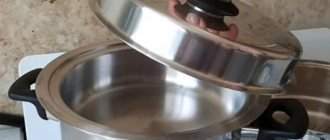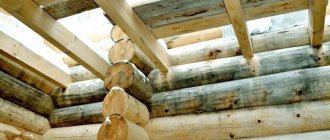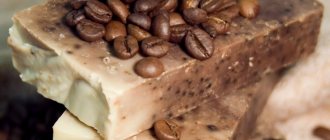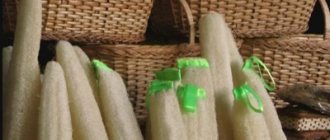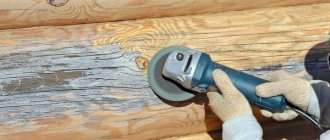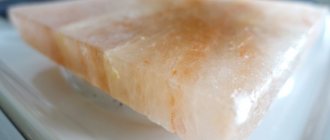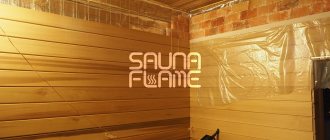Himalayan salt is not destroyed by high temperatures and can withstand heating up to 550°C. In addition, heating contributes to the ionization of the room and negatively charged ions enter the air, creating a unique microclimate close to the sea, which disinfects the air and has a positive effect on the nervous, respiratory and immune systems of the body. By visiting a sauna and bathhouse finished with Himalayan salt , you will rid your body of toxins and heavy metals, improve your immunity and prolong the performance of your body.
Healing properties of Himalayan salt:
- has a beneficial effect on the nervous system;
- helps remove toxins and other harmful substances from the body;
- helps improve blood flow;
- helps strengthen the immune system;
- disinfects the air, saturating it with negative ions that kill bacteria.
Himalayan salt has a beneficial effect on health and helps fight respiratory diseases, weakened immunity and a large list of other diseases, since the salt contains about 84 biologically active components, such as calcium, magnesium, potassium, copper, iron, phosphorus, boron, chromium, fluorine, iodine, manganese, molybdenum, selenium, zinc, which are also present in the human body.
Using Himalayan salt in finishing baths and saunas:
— Lining the stove with Himalayan salt in the sauna
Under the conditions of a specific microclimate, a special temperature and humidity regime in a steam room, the evaporation of beneficial microelements and the release of ions from Himalayan salt minerals becomes maximally active, and the procedures themselves are maximally effective and beneficial. Salt blocks and slabs can actually withstand temperatures up to 500C, and quite high absolute humidity. This means that, without a doubt, they can be used not only to decorate any wall panels, both with and without decorative lighting, but also to decorate the external casings of the combustion units themselves, instead of the stone cladding used today, to protect walls from temperature radiation from these combustion units. Naturally, it is reasonable in these cases to maintain a certain distance from the surfaces to be coated to the internal salt surface. Functionally, this distance is in fact not only a convection channel for the passage of air, removing the temperature both from the salt elements themselves and from the surface protected with their help, but also provides additional evaporation and transmission of microelements with convection flows from the inside of the salt lining into the steam room room. In options for installing wall panels or covering walls with salt blocks, this distance can be used to install decorative lighting systems in it.
— Himalayan salt inserts in the sauna and steam bath
If it is impossible to make a large panel of salt for economic reasons, then you can achieve the therapeutic effect of a salt sauna by installing several stones (or a ready-made salt panel) or by providing a backlit strip along the wall when designing the sauna. This strip will serve as a lighting source in the sauna. The thicker the cladding, the less light will pass through it.
— Panel made of Himalayan salt (salt wall in the sauna and bathhouse)
In the interior of bathhouses, decorative panels, both hand-made and ready-made, are widely popular, which are available in abundance on sale (these are panels with wood carvings, mosaic panels made of stone and porcelain stoneware, plywood products, paintings using a burner, artistic processing metal plates - so-called coinage - etc.). A panel made of Himalayan salt was no exception, which is not only an effective solution for any interior, but also has a beneficial effect on the human body due to the unique properties of salt of volcanic origin. Himalayan salt has a pinkish-orange hue, conducts light well, and therefore the panel will look more impressive if LED backlighting is used. Panels made of Himalayan salt can be of any formation and relief. Salt on the panel can be presented in the form of tiles and bricks, in the form of crystals and pebbles; In addition, the panels can be smooth (polished) or voluminous with natural relief.
— Lamps made of Himalayan salt (built-in)
Along with regular sauna lampshades, Himalayan salt lamps built into the corners of the steam room are in great demand. They provide a soft, subdued light that is used as main lighting. LED lighting or RGB lighting is installed behind the salt at the request of the bathhouse owner. Special waterproof, heat-resistant (IP68 class) tapes are used for illuminating salt with a service life from the manufacturer of up to 50,000 hours. Lamps are placed in the corners of the room above the upper deck to the ceiling. They are framed in the same style as the sauna room - with a light or dark frame. Built-in lamps allow you to decorate the interior and solve the design problem of original lighting and the use of Himalayan salt in the sauna.
— Accessories and products for sauna with Himalayan salt
The first, affordable and low-budget option for using Himalayan salt in a bath is a hanging bowl with a small amount of minerals , which can be hung above the heater or in the sink. Some stores sell salt lamps , which are successfully installed in rest rooms or other rooms. Among the products made from Himalayan salt that can be used in a sauna, it is necessary to note soap, scrubs, massage stones, lamps and lampshades, and candlesticks . You can purchase wild-shaped stones that weigh about 10 kg, which will serve as a decorative element.
Himalayan salt, which is available for sale on the modern construction market, is represented by several types of material that differ in size, shape and type. We list the most popular of them, which are used when finishing a sauna:
- salt brick (Size 200x100x50 mm) - salt block (Size 200x100x100 mm) - salt tile (Dimensions: 200x200x38 mm; 400x200x38 mm; 400x200x30 mm; 200x100x25 mm; 200x200x25 mm) - salt slab ka with chamfer (Dimensions: 200*100*25 mm; 200*200*25 mm) - salt tile hexagon with chamfer (Size: 140*140*25 mm) - salt tile "Disk" (Dimensions: ∅225x38 mm; ∅150x20 mm) - salt Cube (Size 100x100x100 mm) - Himalayan salt "Pebble" (sold in bulk for room decoration). It is used for laying skirting boards around the perimeters of saunas and baths, dressing rooms and all kinds of other premises. When laying, you can use RGB or LED backlighting. Such salt pebbles range in size from three to five centimeters in diameter. — ready-made salt panel with and without LED backlighting (Dimensions 400x300x25 mm; 230x500x25(20) mm), with frame finishing made of various types of wood. The panel canvas is covered with pink Himalayan salt in the form of crystals and pebbles. The frame is made of wood with a protective layer that prevents the ingress and penetration of moisture.
The cheapest salt sauna will cost you if it is finished with Himalayan salt tiles. Himalayan salt blocks and bricks will cost more, but they will last much longer. Both blocks and bricks have one untreated side - the front; the remaining edges are smooth so that the masonry is even. The raw, chipped texture of the front side of the bricks and blocks creates the feeling that you are in a salt cave.
Important!!! Finishing the sauna with Himalayan salt should not come into direct contact with water. This salt dissolves easily, so you need to apply water to the stones carefully so that the water does not fall on the salt wall. Otherwise, there will be holes in the finish. The final result of what you get in the end will depend not only on the size of the tile, its thickness, the lighting that is used to highlight the Himalayan salt in the sauna, and on the shade of the Himalayan salt (color from white and pink to cherry and dark brown) . The color of the salt element depends on the color of the formation from which it was extracted.
Himalayan pink sauna salt
Himalayan salt in the interior of baths and saunas
Himalayan salt has not only a beautiful structure and color, but also high density, due to which it is successfully used in interior design.
Several types of building materials are produced from Himalayan salt, such as
like: • salt bricks (with smooth and torn surface); • salt blocks; • salt panels; • salt tiles; • salt cubes.
Himalayan salt bricks are mainly used to construct entire salt rooms, partitions, walls, floors and steps. When placing Himalayan salt in the interior, you should consider the ability of the salt to transmit light. Daylight passing through the Himalayan salt panel will highlight the unique internal structure of each brick and create a beautiful visual effect. Himalayan salt bricks are often used to decorate floors. In this case, not only lighting is usually installed, but also heating, which ensures better ionization of the air.
To create a beautiful visual effect in interiors using Himalayan salt, LED strips (RGB or LED) are often used. Their power is planned based on the thickness of the material (brick or tile). Special power supplies make it possible to smoothly adjust the brightness of the lighting.
Panels and tiles of different sizes are most often used to decorate rooms . They are perfect for finishing walls, columns, niches and other elements in the room. This fairly new and unique product of different sizes can organically fit into any style of room. A panel or an entire wall made of Himalayan salt will undoubtedly create a unique atmosphere.
Most often today, Himalayan salt is used in saunas and salt rooms. In conditions of high sauna temperature, air ionization occurs more intensely, which means the healing and tonic effect increases. Beautiful diffused soft light from the walls lined with Himalayan salt can create a relaxing atmosphere in the sauna. There are many options for placing Himalayan salt. You can create a large panel on the wall, place salt paintings, or cover the heater with Himalayan salt.
Salt wall: benefits
The therapeutic effect of a salt wall is achieved provided that there is 2 square meters in the room (approximately 30 square meters). meters of salt surface. For those who decide to decorate the room with natural salt for the purpose of aesthetic satisfaction, it is enough to use salt stones in the quantity in which it is intended. A large number of salt crystals does not negatively affect the body, and therefore only room humidity can limit its use.
In the regions of Russia it is possible to buy salt bricks for finishing from the Himalayan or Black Sea salt. Therapists recommend using the latter option for the reason that it contains more sodium with chlorine and other useful elements.
Types of finishing material
If you are interested in a salt wall, you can buy the material for the bathhouse and everything you need for installation in our store. Since salt is an aggressive material, there are certain nuances in the assembly or installation of surfaces. Blocks without cutting require the use of a special mixture, which is also presented in our assortment. When using, it is important to follow the instructions and mix the composition in small portions, since it quickly polymerizes. The consumption of the mixture is indicated on our website.
Himalayan salt tiles with a groove allow you to mount surfaces without special glue. To install the elements, you will need a profile. Salt blocks are strung on it and securely fixed using grooves. Such a wall is easy to install and dismantle; individual modules can be replaced if necessary, maintaining the overall structure.
Himalayan tiles with cuts are available on our website : elite version and regular. The outer sides of such modules are smooth, the cut is made along the long side. The material is intended for use in salt rooms, baths and saunas. The elite group is trimmed, the standard group is not trimmed.
a salt wall with your own hands using an aluminum profile, which securely fixes the individual elements and prevents them from accidentally falling out.
DIY salt wall in an apartment: application options
Options for applying salt to walls depend on the following features:
- The area intended for the application of crystals.
- Room temperature.
- Possibility to install the necessary equipment.
- Wall bases - concrete or brick wall - are the best option.
There are several options for forming a salt wall in a room:
- Soaking the burlap.
- Spray
- Planting blocks with glue.
- Decoration with large crystals.
Selecting a light source
Fiber Optic Spot Lighting
The most suitable option, in our opinion.
It does not require replacement of lamps (the service life of the LED in the projector is 50,000 hours).
The fiber can withstand temperatures up to 180 °C.
You can vary the brightness of the lighting by the number of points used per meter.
There is only one drawback - the relatively high cost.
Linear fiber optic lighting
The most expensive option.
Due to the design features, it will not be possible to install it everywhere, because... The fiber length of all rulers is the same, and the rulers themselves are installed at different distances from the projector.
Withstands lower temperatures than dots (80 °C).
LED tubes
We are talking about tubes from manufacturers of sauna equipment.
They have a protective box, which makes it possible to operate them at high temperatures.
After the tube burns out, it needs to be replaced.
The tubes have a set of fixed lengths.
LED strips
Such tapes are produced, among other things, by manufacturers of equipment for the construction of saunas. They have a protective shell, thanks to which they can be used at high temperatures.
After burnout, they require replacement.
Despite the protective sheath, such tapes are still not designed to withstand the same high temperatures as optical fiber.
How to apply salt to walls: instructions and application technology
The technology for applying salt crystals differs in the duration of the work, the service life and the methods used to create the desired salt wall.
Glueless salt wall: installation technology
The use of the glueless method is the formation of a salt wall without the use of special glue. There can be two methods of glueless design:
- Soaking the burlap.
- Spray
The first option involves soaking clean burlap in a thick salt solution. In order for the crystals to settle and grow on the fabric, it is necessary to dissolve 1 kilogram of mountain salt in 350 grams. In order for the salt to completely dissolve, you will need to heat the water and only then dissolve the salt in it.
To form the material for wall decoration in the future, it is worth pouring water into a vat made of plastic or ceramics (metal is not used). Place the burlap in such a way that you get either a flat surface or an uneven base for decoration. When the salt builds up and hardens, you can begin to decorate the wall. Attaching burlap to a wall or shelf is possible using self-tapping screws or nails. The carelessly extended salt streaks look original.
Spraying is a more labor-intensive and technically complex process. To build up a salt layer on the surface of the wall, you should first level it with plaster without finishing it. After applying the primer (preferably acrylic), spray on a thick salt solution. The only problem is that each layer of 0.2-0.3 mm must crystallize without the use of hair dryers and other devices. Only after each layer has completely dried in a dry room can the next layer be applied until the required thickness is formed.
The spray application method is suitable for uneven walls that have bulges, pits and uneven structural protrusions. All such defects under a layer of crystals will look original and natural.
How to apply salt to the walls for a salt room with glue
A more practical forming option is gluing salt plates to the base of the wall. This method is not suitable only for plasterboard walls and uneven surfaces. In order to create a favorable climate in your room you will need:
- Align the wall with an error of up to 0.3 mm. If there are more irregularities, they will need to be leveled.
- The tiles are fixed to an ideal, flat and always dry surface using special construction adhesive without water. The glue is applied around the perimeter of the tile: in the center and crosswise.
- Laying with vertical bandaging of seams.
- The width of the seam is at the discretion of the designer; it is permissible to use both installation close to each other and across a gap.
- If necessary, you can seal the seams with salt: add water to the dry mixture until the grout consistency is formed.
When creating a frame base for the blocks, a metal profile system is formed from strong rods to fix the salt slabs. Installation in this way is carried out only by specialists with professional equipment.
If you plan to create a salt panel with internal lighting, then grouting the seam is mandatory for the reason that the light emanating from the cracks will unpleasantly “hurt the eye.”
One sq. a meter of salt slab weighs 60 kg, and therefore before carrying out work it is worth making sure that the surface is durable for the planned finishing.
Other mounting options
Other options for installing salt are used for decorative design of space. Quite popular is the method of decoratively forming a salt mound near the floor in the form of a fireplace from rough, unhewn stones of coarse salt. Gluing is done with liquid stone nails one on top of the other.
There is also the option of designing a mini fireplace with internal lighting made from pieces of salt. It is noteworthy that salt panels have several shades: from natural gray to pleasant yellow and beige.
Installation of salt blocks is carried out in a room with a humidity of 35-60%.
Miracle from the top of the world - Himalayan salt: history, properties, applications
A little history
Everyone knows that the planet has undergone a number of changes. For example, picturesque India was once a separate continent, slowly moving towards Eurasia. As a result of the collision of tectonic plates, the enchanting Himalayas and mysterious Tibet were born. After some time, shining pink crystals appeared on the newborn rocks - the salt of the ocean that separated the continents. As a result of volcanic processes, amazing crystals mixed with molten magma, acquiring a unique composition and charming tone.
Today, pink salt is mined by hand in colorful Pakistan, 200 km from the picturesque Himalayan range.
Properties
Tibetan salt has been the subject of scientific research for a long time, the results of which have confirmed its healing power. And the most interesting thing is that the substance reveals all its life-giving properties when heated: the higher the temperature, the more benefits you can get. Therefore, pink crystals began to be used in the steam room.
The substance is known for the following beneficial properties:
- cleansing;
- relaxing;
- calming;
- nutritious;
- restorative;
- anti-inflammatory;
- antiviral;
- bactericidal;
- rejuvenating;
- stimulating;
- regenerating;
- laxatives;
- diuretic;
- strengthening;
- stabilizing.
The feeling after a salt bath is indescribable!
Application options
In addition to their recognized benefits, Himalayan crystals are incredibly beautiful. They are often used to decorate saunas. For this use:
- salt tiles;
- salt brick;
- salt blocks;
- salt cubes;
- salt panels.
Also in great demand are:
- salt placer;
- salt lamps;
- salt soap;
- salt pebbles.
All products give a divine symphony consisting of melodic sounds of health, beauty and youth!
Where
It is quite logical, keeping in mind the healing properties of salt (halite), to use it to decorate a bedroom or children's rooms in order to be able to breathe salt ions during sleep. Salt walls would be appropriate in the relaxation room near the sauna, in fitness rooms, and in massage rooms. Thanks to the gray-white color scheme, halite looks respectable in living rooms, billiard rooms, and offices. However, we must remember that tiles can only be used for decoration in rooms with a relative humidity of 35–65%. At high relative humidity (from 65% in constant mode), as well as in direct contact with water, the tiles are destroyed, because halite does not like water very much. If the tile is kept wet for some time, it will begin to bleed condensation and dissolve. Of course, complete dissolution of the tile is not a matter of a couple of weeks or even months, but experiments have shown that a salt tile placed in a chamber with 100% relative humidity loses 15% of its mass in a month. If you really want to, you can tile the sauna itself with salt tiles, but this is only possible if the sauna is used rarely (once a week), and then you don’t forget to dry and ventilate it well. The tile itself is heat-resistant; moreover, it can get quite hot and then give off heat for a long time. But the mounting solution on which the tiles are mounted cannot withstand temperatures exceeding +65 °C. Therefore, if you want to decorate the fireplace room with salt tiles, you need to place it away from the immediate heating zone.
How
One square meter of salt tile weighs about 60 kg. Structures made of brick, concrete, and wood can easily withstand this weight, but for cladding plasterboard partitions, it is better not to use salt or to reinforce the base. The tiles are fixed to a flat, dry surface with a water-free multi-purpose construction adhesive, which is applied around the perimeter of the tile and in a cross pattern along its center. Lay the tiles with vertical bandaging of the seams. The width of the joint is not limited in any way: the tiles can be installed either closely or across any gap. If desired, the seams are rubbed with the same salt. By adding a little water to dry ground salt, you achieve the desired grout consistency and fill the voids with this mass. But when creating a backlit salt panel, grouting the joints is mandatory! Otherwise, light will penetrate through the cracks without scattering and irritate the eyes. In order for the salt wall to glow with soft light, it is necessary to leave space between the tile and the base for illumination, the role of which is played by an LED strip. To do this, galvanized profiles 60x30 cm are horizontally attached to the wall in increments of tile height. An LED strip is laid between them (usually it is made with an adhesive base). Uniform illumination can only be achieved if two rows of diode strip are used per row of tiles. LED strip consumption is approximately 12 m per 1 sq. m. tiles. After the lighting has been fixed, all electrical components have been assembled and tested (controllers, transformers, amplifiers, power supply, switch, etc.), you can proceed directly to installing the tiles. Since the tile is mounted on a profile (with a groove half its width), the mounting mortar is applied in strips along its wide edges.
For what
In order not to delve into the medical indications for the use of inhalation with salt ions, let’s say that to achieve a therapeutic effect, 2–5 square meters of salt surface per room with a volume of 60 cubic meters is sufficient. m (for example, a room area of 20 sq. m with a ceiling height of 3 m). For those who simply decided to decorate their home with this natural material, only the humidity of the room can limit their flight of fancy. Large blocks from which tiles are cut are used to imitate columns. Tiles are used to decorate slopes and niches, playing with sizes to create decorative panels. If desired, you can even make a partition from tiles (both with and without lighting): assemble a frame from a galvanized profile and mount tiles on it on both sides. In addition to rectangular salt tiles of standard sizes, you can also find “shapeless” ones that imitate saw cuts of natural stones. It is cut from “raw” salt blocks.
How long does a salt wall last?
Features of the service life of a salt wall depend on the quality of the work performed, as well as on the method used and the humidity in the room. The main enemy of a salt wall is moisture. If there is condensation in the room, the salt wall moves away and peels off from the base.
The material itself is fire-resistant, and therefore it can be used even in a bathhouse if it will be used infrequently, and after each procedure the room is ventilated and dried. The only problem can be that the glue on which the salt block is placed cannot withstand a load of more than 65 degrees.
A wall made of useful material serves depending on the type of application of crystals:
- When applying dust or spray, renewal will be required every 3 years.
- With block installation, restoration is necessary every 5-6 years.
For example, professional wall cladding in the form of a block of the mineral halite is unlimited in use. But not even every wealthy person can afford the use of such material. When certain factors are created, you can observe how the salt layer grows on the blocks.
Sawing method
It is used to make bricks from Himalayan salt in countries such as Pakistan, India, and Bhutan. This is a labor-intensive process, using a large number of workers. The mined salt blocks are cut, polished and packaged.
A similar method is used to produce lamp blanks from Himalayan salt.
The principle of making lamps from Himalayan salt is similar to the method of making blocks:
As stated earlier, research does not support the benefits of Himalayan salt blocks in preventing respiratory diseases. Therefore, we can only talk about the decorative functions of “Himalayan” bricks.
Features of care
It is noteworthy that different combinations and powers of sodium chloride sources (slabs or salt spraying) provide equally different dosages of negatively charged air ions. According to this theory, there are different durations of stay in a room with a salt wall:
- If the concentration of negative chlorine ions is 5 thousand/1 cm3, then the effect is identical to a walk in a pine forest or near the seashore during a small storm.
- If the concentration is 8 thousand/1 cm3, the effect is identical to a walk in the mountains.
- At 30-35 thousand/1 cm3 the effect is equal to the therapeutic effect, which is controlled by a doctor. But, with a strong desire, it is impossible to recreate such a climate at home.
In order for a room with a salt wall not only to please the eye, but also to serve for a long period of time, it is recommended to monitor the humidity in the room, not drink hot drinks or alcohol in the room, and also limit the number of visitors to 3 people per room of approximately 30 square meters. meters.
A visit to the salt room stabilizes blood pressure, helps relieve stress, increase stress resistance, overcome insomnia and spring fatigue syndrome, and strengthen the immune system. But, in order for the salt wall to serve for a long time, it is necessary to follow the rules of work at all stages, as well as monitor the humidity in the room. For connoisseurs of natural space design, such a salt wall will be a universal way to express themselves.
The finished result.
After the stones have become hard, we simply cut the bags and take them out (it’s a pity for the socks!)
In our situation, the finished stones came out in 2 days. But we need to take into account that it is now 35 degrees Celsius in the shade during the day. Now we will test drive them to see how they behave in the bathhouse. But they turned out to be very strong. I think how to use it should, in principle, be clear to everyone - we add them to the stones in the bathhouse. We steam the whisk, set the herbal tea to brew and go steam.
Useful video
Salt from Artemovsk, Altai salt, overseas Himalayan salt... Many people have heard about salt rooms, or halochambers, today. They are usually installed in sanatoriums, in the offices of reputable companies and even in expensive restaurants. Contractors are not against working with the private sector. But the cost of a halo chamber sometimes turns out to be more expensive than the house itself. In our material we will tell you how to make a salt cave with your own hands - and not go broke.
Before we start construction, let's figure it out: why do we need a halo chamber in the house at all and won't it do more harm than good?
Let's start with the fact that salt in an amount of 0.9% is found both in the blood and in tissue fluids. It has been proven that without this mineral a person can live no more than 10-11 days.
But the main purpose of halochambers is, of course, not to replenish salt reserves in the body, but to treat and prevent the respiratory tract. The salt aerosol, which is essentially the air present there, effectively destroys harmful microflora, and at the same time cleans up the sputum that has formed. Therefore, if you suffer from bronchitis, sinusitis, pharyngitis, or even just caught a common acute respiratory infection, feel free to go for salt treatments.
Among other things, halotherapy polishes burnt skin tissue, thereby promoting its rejuvenation.
Finally, another benefit of salt air is its ability to minimize nicotine addiction. So everyone who wants to quit smoking, read on carefully!
Now about the imaginary harm. There is an opinion that salt is deposited in joints, kidneys and other organs, being the root cause of unpleasant diseases. We declare - these are tales. Calcium urate and calcium oxalate, phosphates and urethrates act as stones and deposits, and the NaCl compound has nothing to do with them.
If we have convinced you of the need to have your own salt room, you can get to work.
Selecting a room
First of all, a mine needs a room. It would be nice, of course, to build a whole building, but you can get by with a separate room.
The following requirements must be met. A basement or semi-basement is ideal for a salt mine. As a last resort, the first floor. The room must be dry, initially devoid of water, electricity and sewerage communications. If they are present, they will have to be dismantled. The floor must be concrete. If there is none, the boards must be disassembled and a full screed made. Salt is a heavy thing; it will crush any other coating. The height of the room is in the range of 2.4-3 m.
Material selection
Before delving into the features of this or that salt, a few words about the technologies for its use. Thus, the walls in the halochamber can be made of salt blocks or simply “plastered” with it. The second method, it would seem, is not so troublesome, but in fact it is short-lived. Such a salt finish will require annual and rather expensive restoration, so we will not consider this option.
Now about the material itself.
The most popular product today is pink Himalayan salt. One brick from it costs about 600-700 rubles on the construction market. In addition, the seller will ask you for another four thousand for each bag of a special adhesive mixture. Do you feel the scope?
The truth is that salt will always remain salt. And the mineral mined in the Himalayas will differ from its analogue from Artemovsk only in price.
It is best to buy salt directly from, “Bassol”, “Iletsksol” or “Tyretsky salt mine” - it doesn’t matter. Contacts of these enterprises are easy to find on the Internet; the problem may only be with the volume of purchases. These giants are used to selling goods by the wagonload, and you will only need 5-10 tons. But here it all depends on your communication skills; you can always reach an agreement. If diplomacy is not your thing, buy salt from resellers; there are plenty of advertisements on the Internet.
To work, you will need fins no more than half a meter wide, but no less than 15-20 cm, and also salt crumbs with a fraction of 1-1.5 mm.
Construction works
It all starts with the preparatory stage: dismantle all the finishing, if there is any, of course. You should end up with a bare concrete floor and similar brick walls. In this case, the windows should be blocked, and the doorway should be expanded upward by 15-20 cm.
If the walls are cold, they must be insulated. Moreover, it is better to do this from the side of the facade.
The next stage is the organization of ventilation ducts. It is advisable to lay them out of brick and place them in the corners of the room. Under no circumstances use metal pipes or corrugations for ventilation; salt will quickly pick up the “keys” to them. The windows in the supply ducts are made at a height of one and a half meters from the floor, but the hood should be located right under the ceiling.
Now about waterproofing. Dry mixtures like CERESIT CR 65 are best suited for work. Clean the walls and floor from dust and moisten them with water. Then dilute the contents of the bag to a creamy mass and, using a spray bottle, apply waterproofing to the surfaces to be treated with a layer of 2 mm. Work can be continued only after it has hardened, that is, no earlier than after 7 days.
After the waterproofing has dried, proceed to arranging the floor. It is laid out from blocks of salt 15 cm high. If you have more massive stones, you can always trim them to the required thickness with a grinder. Just take the circle that is on concrete.
The process itself is somewhat reminiscent of laying paving slabs. The blocks are placed on a “prance” made of moistened salt. Its moisture level is enough to make “snowballs”, but when compressed, water does not come out. All cracks between the blocks are clogged with the same solution.
It is not necessary to wait until such a base dries. Lay out the floor - and take on the walls. The first row is laid out from the largest sections with a fraction of 500×500 mm. The seat is first leveled with moistened salt.
Yes, it’s only in the diagram that all the blocks are smooth and even, but in reality their shape is far from ideal. To give them a working look, you will have to do a fair amount of work with a chisel and grinder.
Before laying the next row, level the seat again with a salt trowel and lay the blocks, but of a smaller fraction. Select minerals in such a way that a slope of 80-60° is formed. The higher the ceiling, the greater the slope.
Starting from the second row, the brick wall with salt must be tied with wooden crutches. This is done in meter increments, and the dressing should be laid at different angles in both horizontal and vertical planes.
Do not forget that all masonry joints are compacted with wet salt. Very soon it will crystallize and connect the entire chamber into one solid monolith.
If during the work it was not possible to close a brick somewhere, it’s okay. The “cave” does not have to be 100% salt. Bare areas can be lined with the same sandstone, it will be very beautiful. We also suggest not to “salt” the ceiling. The spray is short-lived, so it is much easier to line it with wooden clapboard. Just use copper nails in your work; metal ones won’t last long.
And the last nuance. All work should be carried out at a temperature of 26-28 ° C (useful for rapid crystallization of salt). Therefore, you will need a heat gun or a good heater.
In the end it should look something like this.
There is very little left. Install ventilation in the finished shafts, pour a 3-5 centimeter layer of salt on the floor and place comfortable sun loungers around the room. We remind you: during procedures, only supply ventilation should be turned on. A complete replacement of air is done after the session.
As you can see, there is nothing about creating a halo chamber that you could pay a million for. It’s quite possible to carry out all the processes yourself. Most importantly, remember about protective equipment. When working with salt, you must wear gloves, a respirator and safety glasses.
Well, now it's time to test the salt mine. Turn on some nice music and enjoy!
In the modern world, wellness treatments to boost immunity and maintain health are necessary for everyone. But not everyone can find the time and opportunity to attend such events.
In this case, you can use medications, the effect of which appears immediately, or traditional methods are safer and more reliable.
Pink salt has been known since ancient times for its healing properties . With its help, respiratory, skin diseases, and nervous disorders are eliminated. Salt mines and caves were equipped with special rooms with a salt aerosol.
This non-drug treatment is called halotherapy . If you don’t have time to visit a salt cave, then halotherapy at home will be a wonderful option for those who care about their health.
Halotherapy is a type of treatment without the use of drugs. It is based on the creation of an artificial microclimate, which in its properties and conditions will be as close as possible to salt caves.
The effectiveness of the method depends on the duration and systematicity of treatment. To completely eliminate pathology, you need to undergo certain courses of procedures and adhere to all rules and recommendations.
Key points about how halotherapy is useful:
Halotherapy cleanses the organs of the respiratory system, nourishes cells with beneficial ions, restores lung function, respiratory tract microflora, and removes harmful bacteria and dust.
During the session, salt air increases the oxygen saturation of the blood and activates the body's protective function to fight viral infections. Salt caves are especially useful for those who suffer from sinusitis, sinusitis and bronchitis.
This technique is effective for children who often suffer from colds. Helps strengthen the immune system of both children and adults.
Halotherapy combats cosmetic problems . Since salt procedures cleanse the skin, renew it, promote rapid exfoliation of the stratum corneum and nourish it remarkably.
Salt caves qualitatively change the intensity of blood flow to skin cells and enhance oxygen exchange at the micro level. The healing process of wounds and abrasions is significantly accelerated.
Thanks to this ability, halotherapy is recommended for people who suffer from acne, dermatitis of various origins, psoriasis, seborrheic skin lesions and other skin pathologies.
Salt particles improve the condition of hair follicles, giving hair shine and a healthy appearance.
Halotherapy is a great way to help quit smoking . Even in severe cases, when a person cannot give up his bad habit. Inhaling clean air allows you to compare it with tobacco smoke.
This is the first step towards a healthy lifestyle. The lungs are cleansed, inflammation is eliminated and the craving for nicotine gradually subsides.
Many people are interested in how often to do halotherapy. It is recommended for use in the autumn and spring periods, when exacerbation of diseases most often occurs. The number of sessions depends on the nature and severity of the pathology. Usually ranges from 10 to 25 procedures.
Halotherapy: how a salt cave treats
There are indications and contraindications for halotherapy. There are quite a lot of indications for its use. The main goal is to improve the health of the respiratory system, cardiovascular and nervous system.
Main indications:
Contraindications
Like any treatment method, halotherapy has a number of contraindications for use:
In the absence of the above conditions, the technique can be used from childhood.
Many who have visited a salt cave at least once in their lives were surprised by the miraculous properties of their microclimate.
But due to the lack of opportunity to do this regularly, people are wondering whether halotherapy is possible at home. After all, prevention or treatment with air in salt caves is required more often than once a year.
You can create a salt room with your own hands . If this is done correctly, then it is quite possible to almost thoroughly reproduce the microclimate characteristic of salt caves. The effect of their use is in no way inferior to treatment in natural caves.
Equipping a salt room yourself is an expensive and complex procedure that consists of the following stages:
Basic principles for choosing a halo chamber
When deciding to build a salt room at home, you need to consider the following points:
- When constructing a halochamber, it is important to adhere to the methodology. It is allowed to build it only from pure rock salt without foreign impurities.
- The salt room can be combined with a full-fledged relaxation complex through chromotherapy systems.
- When choosing the design of a salt cave, it is possible to proceed from the requirements of compliance with a non-specialized stylistic solution for the home SPA area. When determining the design and configuration, it is important to take into account children visiting the salt room.
According to the methodology approved by the Ministry of Health, a halochamber is a separate room equipped with three main components that create a healing climate:
For that. To use halotherapy at home, specialists have created complete sets of salt caves and rooms.
Their diversity makes it possible to place them both in small rooms, creating basic therapeutic functionality, and in fashionable interiors.
Pregnancy is a crucial period in the life of every woman. Even if bearing a child occurs without complications, you should be attentive to your well-being and make responsible decisions about the use of any health procedures.
Halotherapy is a simple and natural physiological procedure that does not have an aggressive effect on the body. The healing effect is complemented by a feeling of calm and relaxation.
Therefore, in the absence of general contraindications, increased suspiciousness and acute toxicosis, visiting a salt room during pregnancy has a beneficial effect on a woman’s well-being.
But it is important to understand that all procedures should be used only after agreement with the doctor who is monitoring the pregnant woman. In addition, he must monitor the body's response to halotherapy. If any deviations occur, the course must be stopped immediately .
The use of halotherapy, even at home, significantly improves a person’s well-being, eliminates many pathologies, strengthens the immune system, and reduces the frequency of viral and colds.
Already after the first procedure, salt rooms give a tangible effect, a surge of energy and strength.
Many people who encountered a salt cave for the first time in their lives and were truly impressed by the properties of their microclimate dream of having their own cave.
Equipping a salt cave is not a cheap pleasure, which is why many people think about making a salt cave with their own hands.
Choosing a room.
A basement or first floor is suitable for a salt cave.
The room must be dry and initially devoid of water, electricity, and sewer communications. If they exist, they will have to be dismantled.
The floor in the room is concrete.
The height of the room ranges from 3 meters.
It all starts with the preparatory stage: dismantle all the finishing, if any. It should look like a bare floor and the same walls. At the same time, block the windows and expand the doorway upward by 15-20 cm. If the walls are cold, they must be thermally insulated. Moreover, this must be done from the side of the facade.
The next stage is the organization of ventilation. Under no circumstances should metal pipes or corrugations be used for ventilation. Exhaust ventilation should be located under the ceiling.
You also need the material itself - salt, it is better to buy salt from the manufacturer - this is Artemsol, Iletsksol, Bassol, Tyretsky salt mine - it doesn’t matter.
There are several ways to implement your plan.
The first method: covering the walls with salt blocks or tiles. They come in different thicknesses and colors.
Salt blocks or tiles are simply glued to the wall.
The advantage of this method is speed: a salt cave can be created in 2-3 days, the disadvantage is the need to use glue and the loss of some free space due to the thickness of the tiles.
The second method: applying salt to the walls - using the method of making a salt coat.
The room must be dry, otherwise there will be no adhesion of salt crystals to the wall surface. It is necessary to prepare the salt in a plastic container: add enough salt to clean warm water so that it becomes sputum, but does not dissolve completely. The floor in the room should be washed clean and plastic film should be spread along the walls.
Using a special scoop, you need to scoop up a small amount of salt and throw it on the wall, creating an even layer on its surface.
Work is carried out at a temperature of 26-28 °C.
Naturally, just finishing a room with salt will not make it a salt cave. But in fact, the creation of a microclimate characteristic of salt caves and, as a result, the achievement of the desired result is ensured by another component: an aerosol generator and equipment that can take into account the readings of humidity and air temperature, and so on.
How to choose such equipment and where can you buy it and how to configure it?
Making a salt cave with your own hands is like assembling an airplane without having any parts to assemble the airplane.
The Tatyana salt cave was built using the technology of the Gorbenko Institute in St. Petersburg and the equipment is also from St. Petersburg of the same institute.
We invite you to visit the Tatyana salt cave.
We have been helping our visitors maintain and improve their health for four years now.
You can learn more about the Tatyana salt cave by typing Tatyana salt cave on the Internet.
Categories:
What does a modern person prefer: expensive medicines or traditional methods? The effects of drugs are felt immediately, but conventional drugs are safer and more reliable. For example, Pink Salt. Even in ancient times, it was used in the treatment of respiratory, skin diseases, and nervous disorders. Special rooms with salt aerosol were installed in salt mines and caves. Patients know this non-drug method as “halotherapy”. If you don’t have the desire or opportunity to visit a therapeutic and prophylactic halo chamber in the near future, it doesn’t matter..
Where can I use it?
We should also talk about where salt products can be used. Of course, taking into account all the healing and preventive “abilities” of rock salt, the first thing that comes to mind is medical institutions. However, salt panels and blocks are an excellent material for decorating saunas and baths, hotel premises and office spaces. They will look very appropriate in the bedroom.
In addition, salt panels and blocks are perfect for interior decoration in cafes, restaurants, shops, and gyms. It is worth adding that such material is often used for floor finishing. And from this it is easy to understand that salt products are characterized by increased versatility.
Halotherapy: origin story
Halotherapy has been known for many centuries. It did not become a separate branch of science or a patented treatment method. But it has been popular among the people since ancient times. People made pilgrimages to the salt caves “to breathe in the healthy air.” It became known that air saturated with salt improves physical and psychological condition, and overall well-being. Reason: aerosol microparticles completely disinfect the air and destroy the protein bodies of viruses and bacteria.
It was significant that people working in the mines had almost no diseases characteristic of the rest of the population. Some miners were relieved of seemingly incurable symptoms. Noticing this phenomenon, doctors began to investigate the properties of salt. Later, artificial premises identical to salt caves were created everywhere. This is how speleotherapy appeared. Let's consider the meaning of this concept: “speleo” - cave, therapy - treatment. People with various diseases have been studied for decades. Today, the results of numerous scientific studies in this direction have been provided. Many world-famous resorts are famous for their hospitals built on the basis of mines or grottoes. There are similar institutions in the Czech Republic, Belarus, Poland, and Romania. The first halochamber appeared in 1985. And in 1988, a halogenerator was designed: a dry aerosol generator. The device provides an optimal level of dispersion and forms a composition identical to the natural combination of components. A unique drug “Aerogalite”, made on the basis of natural salt, was released into mass production. To create a microclimate with a useful concentration of salt, you can use a generator or purchase inexpensive salt lamps. Salt lamps are not only healing, but also stylish lighting devices that have no contraindications.
Halotherapy: treatment and prevention
The effectiveness of this method depends on the duration and systematicity of treatment. Therefore, halotherapy is often carried out in rehabilitation centers, children's and sports institutions, and boarding houses for the elderly. It is there that the attention of visitors is attracted by spectacular salt lamps filled with a warm and cozy flicker. To completely recover from the disease, it is necessary to undergo certain courses of procedures and adhere to the rules recommended by doctors.
As a result, the following results can be achieved:
- Strengthening the immune system.
- Increased vitality.
- Bronchodilator and mucolytic effect (dilution and removal of sputum).
- Anti-inflammatory effect.
- Improving the condition of the skin.
- Improvement of health, strengthening of sleep, increasing its duration.
- Restoring the nervous system, relieving stress and fatigue.
Halotherapy is especially useful when used in combination. If there is a salt lamp in the room, we recommend performing therapeutic physical exercises when turning it on. Also therapeutically appropriate would be an addition in the form of massage, herbal medicine, acupuncture, etc. The main thing is that during the session the patient is protected from bad thoughts and negative energy.
Pressing
In Russia, the first patent for a method of creating artificial blocks of salt for the internal lining of premises intended for the prevention of bronchopulmonary diseases was issued in 1984. Its authors were S.D. Shipilevsky, Yu.G. Maksimov, A.N. Egorov and G.N. Solomkin (production association “Chuvashstroymaterialy”).
According to him, the blocks were pressed from rock table salt with a moisture content of 5-7%, and then kept at room temperature for a week. This made mass production possible with less labor and the risk of getting defective products.
Who can use salt lamps?
If your home is inhabited by people prone to allergic, respiratory, and skin diseases, salt lamps will effectively serve as a “house doctor.” For what diagnoses is it worth purchasing a night light made from Himalayan salt?
- Chronic and seasonal diseases of the upper respiratory tract.
- Reduced and weakened immunity.
- Vegetative-vascular dystonia, hypertension, nervous disorders.
- Dermatitis, allergic skin problems.
Gatotherapy is especially useful for chronic smokers or people who work in dusty rooms or in chemically hazardous enterprises. They constitute a risk group and are susceptible to the occurrence of pulmonary and bronchial pathologies. Salt lamps are needed not only when there is a patient in the house. First of all, this is a beautiful night light, designed to provide diffused lighting at night. A pleasant glow has a calming and relaxing effect on the subconscious, helping to get rid of anxiety, stress, and the consequences of a busy life in a metropolis.
The duration of a session in a halochamber is about an hour, the minimum number of sessions is ten. It is advisable to repeat the course of treatment in spring and autumn. Salt lamps can be used much longer and more often, at any convenient time. They have no contraindications (except for rare cases of individual intolerance). They will become an effective preventative measure, reducing the number of medications used and diseases in general. On the pages of the site the site provides a varied assortment of salt lamps. A wide range of lighting fixtures will help you equip your home with a unique, individually selected “halo chamber”. It will stand out with its stylish design, optimal size and ease of maintenance. For large rooms, models weighing from 20 to 100 kg are available. For small rooms - small figured products or natural formations: Rock, Drop, Ball.
